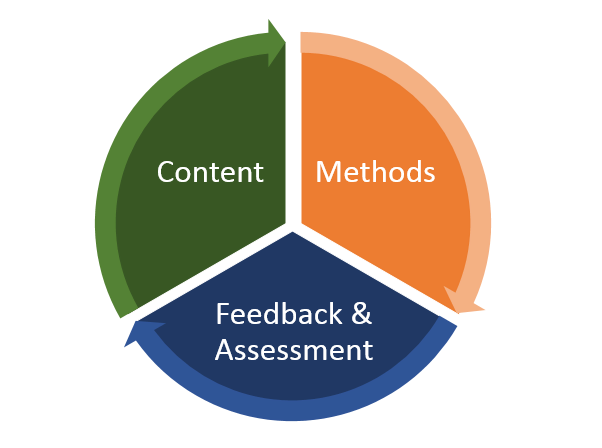Emotional intelligence (EQ) is highlighted in recent years since IQ cannot decide how successful a person gets. So, let’s learn more about emotional intelligence in eLearning in this post.
It is said that the higher EQ you have, the more successful you get. You may hear about that not only for the first time. So, what is EQ? How important is it? Is there any way to improve students’ emotional intelligence in eLearning? This blog post will address your concerns.

Let’s find out the answers to the below questions in turns:
What is Emotional Intelligence?
Emotional intelligence is also known as emotional quotient or EQ. According to Psychology Today, EQ refers to the ability to recognize and manage the emotions of oneself and others. EQ is generally considered to include some abilities to:
- Identify and name your emotions.
- Control and apply these emotions to regulate thoughts.
- Manage emotions, including regulating one’s emotions when necessary and responding to the emotions of others.

It is crucial to be able to express and control emotions as well as to understand, interpret, and respond to other people’s emotions. Life would be colorless if we cannot feel the joy, the love, or even the sadness, the loneliness. By knowing EQ, we can color our lives and live meaningfully. As Robin Sharma said, “Don’t live the same year 75 times and call it a life”.
From those things, educating children about EQ is a necessary task. But, we face a big challenge!
At present, online learning has become a great way to fight the spread of Coronavirus. Teachers and students cannot interact in person when they learn remotely. So, are there any ways to improve students’ emotional intelligence in eLearning? Keep your eyes on the next part for more nice things.
How to Boost Students’ Emotional Intelligence in eLearning?
Someone said, “Education aims to provide students with knowledge”. Yes, it’s true. But, that’s not all. The educational philosophy is to create happy students. It’s hard to reach this destination if the education process just brings science knowledge to them, classically.
To enhance students’ emotional intelligence in eLearning, the teacher should think about the content and method. Besides, don’t forget the feedback as well as assessment. Firstly, we’ll start diving deeper into the first component.

#1. Content
Content plays an important role in evaluating the quality of the lesson. In the eLearning era, the learning content is mostly conveyed through slides. Thus, it needs to be short, clear, and particular. It is a good idea to combine informative objects with annotation objects, such as images, videos, and audio. In addition, converting static slides into interactive eLearning lessons is highly appreciated. The normal text-based slides now turn into game-based slides and interactive slides. The students will remain engaged and excited throughout the lesson as a result.

Imagine that you start an online literature class. Should you tell students that they have to identify how many types of figurative language are included after finishing the work? It’s quite boring, indeed. Let’s do something more realistic. Introducing students to the meaning of the lesson is better. For example, today’s poem shows the great self-sacrifice of a mother. Hence, I (the teacher) hope that you (students) will be grateful and show your love to mothers through daily actions. By doing so, you strengthen students’ emotions to immerse themselves in the lesson. After that, students can interact with interactive content such as dragging the poem’s paragraphs and dropping them the right figurative language, selecting a figurative language representing the paragraphs through multiple choices questions, etc. Thanks to that, students understand the knowledge more than just reading the slides.
Improving students’ emotional intelligence in eLearning through interactive content is effective, isn’t it? To create such content, you can make use of many ActivePresenter interactive features to achieve your goal. Take a look at the Interactive eLearning Topic section on the Tutorial page for details.
#2. Methods
When you have good content, think about methods. To boost students’ emotional intelligence in eLearning, we need to associate teaching methods and classroom management flexibly. In other words, it requires teaching competence.
When building a lesson plan, the content should be divided into small parts with clear objectives. For example, in the warm-up activity, the teacher holds a game for the class. Alternatively, the teacher lets students listen to some baroque music and meditate, or simply asks them about their moods and feelings. This way, students can recognize their own emotions. In the next parts, the teacher can introduce the lesson, explain clearly every definition with instances, assign particular learning tasks, etc.

Furthermore, the teacher can develop students’ emotional intelligence in eLearning through teamwork. To optimize and actualize eLearning, online learning platforms like Zoom support this feature. With the Breakout rooms feature, the teacher (the host) can choose to split all the class members into separate groups automatically or manually. Thanks to group discussions, students can raise their EQ productively. They can share ideas, and options; communicate with each other; manage conflict; inspire and influence others, etc.
#3. Feedback and Assessment
“Teaching is a work of art”. Apart from the content and methods, feedback and assessment can display that art as well. Due to the current learner-centered approach, each teachers’ feedback and assessment aims to develop students. In eLearning, it lacks direct interactions, sometimes. To fill in this gap, feedback can be shown with funny pictures or emotional icons such as happy, sad, surprised, angry, or excited faces. You can apply this to show feedback for each students’ answer in an eLearning quiz or game. Additionally, you can use the Rating scale (Likert) and Essay questions in ActivePresenter to receive students’ feedback at the end of the lesson. They can choose an option to express their feelings or write down their favorite part of the lesson. This helps students identify what they are thinking and feeling across eLearning experiences.

As well as feedback, the teacher can promote students’ emotional intelligence in eLearning through assessment. Take note that we evaluate students’ academic performance by process assessment, not the outcome. With eLearning content uploaded on LMS, you can use the badge or point-based rewards to make students excited. This way, you will encourage students to be more confident, creative, and feel the joy of learning.
Final Words
On the whole, we have many techniques to raise students’ emotional intelligence in eLearning. And we can start doing everything with an amazing eLearning authoring tool – ActivePresenter. The tool ensures you are able to design responsive, interactive, and media-rich eLearning courses. Thanks to that, creating interactive courses, quizzes, games, videos is just a breeze. Also, you can export your projects to SCORM or xAPI then publish them to LMS. This helps you to track students’ interactions, results and get reports. In case you don’t use an LMS, you can still send report data to Google Sheets or Email.

So, that’s the end of the article. Hopefully, it inspires you to boost students’ EQ in eLearning. Have a nice day!
See more: